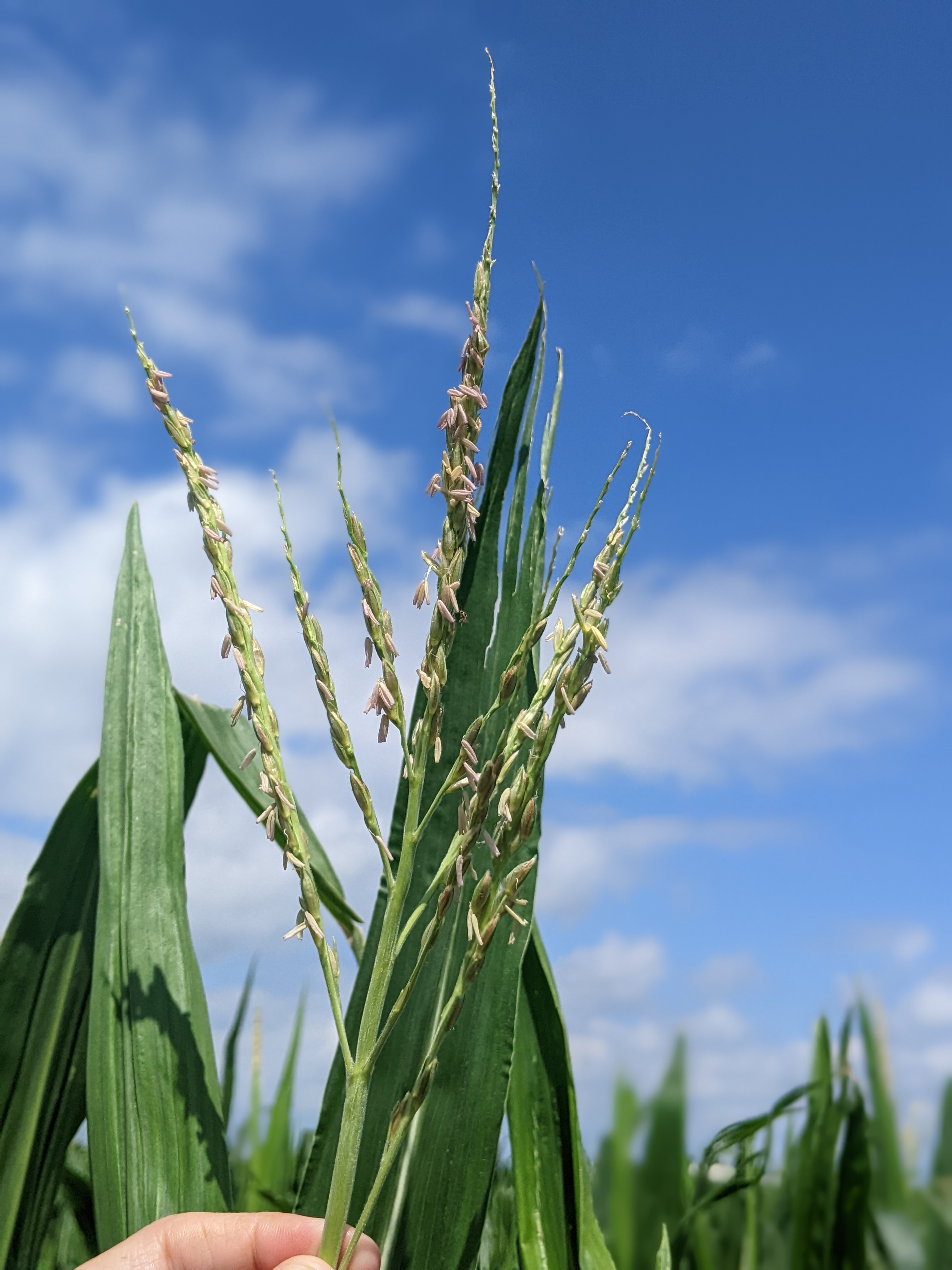Blog Archives
JenREES 7/10/22
Grateful for some rain last week! Hail damaged trees (particularly evergreen trees) need water now to help them heal all the open wounds on the branches, stems, trunks.
Western Bean Cutworm Moths should be around 25% flight for corn nearing or tasseling in much of the area. It was predicted for Guide Rock on July 5, York on July 10, and Clay Center on July 11. This CropWatch article shares dates to watch for around the State: https://go.unl.edu/nmye.
Japanese Beetle Control: I posted a second blog post last week on organic and conventional control products that are sold in this area at local farm stores, lawn/garden centers, Wal-Mart, and Ace. You can print it out from the font page of the York Co. Extension website: https://go.unl.edu/bvqf.
Even after applying pesticides, beetles will continue to emerge and fly in from grassy areas (ditches, lawns, pastures) for a good 4-8 weeks. Plants that are being chewed on elicit responses signifying they’re in trouble. It’s those responses that signal other beetles to come. Even though linden, fruit, and other trees and plants are rapidly defoliated, they should not die. On younger trees that were hail damaged, I’m unsure if the hail + the beetle defoliation is too much stress for survival; we will have to see. I’m also unsure if we will see new leaves in general after beetle defoliation this year or not; trees are super stressed already from all the hail damage. I’m observing new leaves are very slow coming back on broadleaf trees post-hail and that was before we also had the beetle defoliation.
I probably should’ve realized this, but another thing I learned this week is there’s two formulations of ‘Sevin’ being sold. I don’t mention that on the print-out mentioned above. One is the traditional carbaryl that lasts 5-7 days. The other is zeta-cypermethrin which has a residual of 14 days (farmers would recognize this ingredient in Hero and Mustang Maxx). I’m not sure why the company branded both products the same name. The Sevin carbaryl product says it will ‘cause damage to boston ivy and virginia creeper’…both of which are favorites of Japanese beetles. So, that was something new I learned by reading the labels and being called out to an unfortunate incident with boston ivy. I didn’t see that same warning on the Sevin zeta-cypermethrin product, but please check it for yourself if you use it.

Japanese beetles are in corn and bean fields as well. Watch silk clipping in corn and pod clipping in beans (seeing both occurring). Tasseled corn threshold: three or more Japanese beetles per ear, silks have been clipped to less than ½ inch, and pollination is less than 50% complete. Soybean has 20% defoliation once flowering occurs. It’s been interesting seeing beetles defoliating palmer, waterhemp, smartweed, etc. Too bad we couldn’t train them to just eat the weeds!

Hail Damage and Corn Pollination: This one is just hard and I’m genuinely hoping this isn’t as big of an issue as what it looks like. For corn that was V9-V11 during the June 14th storm, check the tassels and the ears. What I’m seeing in fields that were severely stem bruised but not totaled, are ears that are hip high on me with silks that are up to 5” long right now. Tassels are mostly 1-2 leaves from tasseling. Opening up the leaves shows severely damaged tassels with minimal to no anthers. Some anthers are trying to pollinate within the leaves (pics on my blog). It’s normal for silks to emerge before tassels as that’s what breeders have bred corn to do. It’s not normal for the tassels to emerge this much later than the silks and to be so severely damaged. It will be something to watch in all the hail damaged fields that were kept from June 14 storm to see if the pollination timing is impacted in them as well. What I’m recommending is for now, check your fields and take pictures of the tassels and ears for documentation of any problems if crop insurance can’t come out. I’m hoping I’m wrong and that we can still get some decent pollination in these fields.





This is one of a few fields looked at that was between V9-V11 during the June 14th hailstorms. It had severe stalk bruising at the time and around 22-24K for population. Long silks with very few tassels out. Top left tassel was a decent tassel found that was out. Most tassels are within 1-2 leaves of emerging, are severely damaged from the hail, and some were shedding what pollen they were producing while inside the leaves (bottom left photo).
